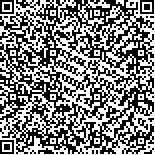| 引用本文: | 常城,韩慧宗,王腾腾,马海涛,刘阳,王斐,张明亮,王力勇,姜海滨.单环刺螠(Urechis unicinctus)微卫星标记开发及5个地理种群遗传结构分析.海洋与湖沼,2017,48(3):498-507. |
| |
|
| 本文已被:浏览 2542次 下载 2373次 |

码上扫一扫! |
|
|
| 单环刺螠(Urechis unicinctus)微卫星标记开发及5个地理种群遗传结构分析 |
|
常城1,2, 韩慧宗2, 王腾腾1,2, 马海涛3, 刘阳1,2, 王斐2, 张明亮2, 王力勇4, 姜海滨2
|
|
1.上海海洋大学水产与生命学院 上海 201306;2.山东省海洋资源与环境研究院山东省海洋生态修复重点实验室 烟台 264006;3.中国科学院南海海洋研究所 广州 510301;4.烟台市水产研究所 烟台 264003
|
|
| 摘要: |
| 采用高通量测序法从单环刺螠基因组中开发微卫星标记,并通过一个秦皇岛单环刺螠野生群体对其进行多态性评价,利用获得的多态性引物对秦皇岛、烟台、潍坊、青岛、大连5个不同海区的野生单环刺螠群体进行了遗传多样性及遗传结构分析。结果表明:本实验设计的50个微卫星标记能稳定扩增的有38个,其中22个微卫星位点在5个群体中均表现为高多态性,等位基因数(Na)介于24-44之间,多态信息含量(PIC)介于0.921-0.967之间。5个群体总的平均有效等位基因数(Ne)范围为6.629-8.850,平均观测杂合度(Ho)和平均期望杂合度(He)范围分别为0.790-0.912、0.851-0.896,大连群体的杂合度最大(He=0.8962),潍坊群体的最小(He=0.8510),其中有12个微卫星位点在不同群体中出现显著偏离Hardy-Weinberg平衡的现象。平均遗传分化指数(FST)表明,群体分化水平处于中等分化水平(FST值为0.0880-0.1136);聚类分析显示烟台群体先与青岛群体聚为一支,再与秦皇岛群体聚类,然后跟潍坊群体聚为一支,大连群体单独聚为一支;遗传距离模式(IBD)显示单环刺螠群体的地理距离与遗传距离间不存在显著的线性关系。本研究开发的22对微卫星标记可以用于单环刺螠遗传结构分析研究,为下一步单环刺螠种质资源保护和人工繁育提供参考依据。 |
| 关键词: 单环刺螠 微卫星标记 地理种群 遗传结构 聚类分析 |
| DOI:10.11693/hyhz20161100238 |
| 分类号:Q346;S917 |
| 基金项目:山东省良种工程项目“优质抗病速生鱼类良种选育”,2014-2017;国家现代农业产业技术体系项目,CARS-50-Z09号。 |
附件 |
|
| MICROSATELLITE MARKER ISOLATION AND GENETIC STRUCTURE ANALYSIS FOR FIVE POPULATIONS OF URECHIS UNICINCTUS |
|
CHANG Cheng1,2, HAN Hui-Zong2, WANG Teng-Teng1,2, MA Hai-Tao3, LIU Yang1,2, WANG Fei2, ZHANG Ming-Liang2, WANG Li-Yong4, JIANG Hai-Bin2
|
|
1.College of Fisheries and Life Science, Shanghai Ocean University, Shanghai 201306, China;2.Shandong Provincial Key Laboratory of Restoration for Marine Ecology, Shandong Marine Resource and Environment Research Institute, Yantai 264006, China;3.South China Sea Institute of Oceanology, Chinese Academy of Sciences, Guangzhou 510301, China;4.Yantai Fisheries Research Institute, Yantai 264003, China
|
| Abstract: |
| Urechis unicinctus is an economically important marine benthos distributed widely in intertidal zone of Yellow Sea and Bohai Sea. To sustain the resources that have been reduced dramatically in recent years, understanding the genetic diversity and population structure of wild stocks for breeding, we isolated the microsatellite markers by high-throughput sequencing for the species sampled from 5 natural populations in Qinhuangdao (QHD), Yantai (YT), Weifang (WF), Qingdao (QD), and Dalian (DL). Among 50 pairs of microsatellite primers we designed, 38 presented obvious bands. Moreover, 22 loci showed high polymorphism, the allele number (Na) of these loci ranged 24-44, the polymorphism information contention (PIC) 0.921-0.967, and the effective allele number (Ne) 6.629-8.850. The average observed (Ho) and expected heterozygosity (He) were 0.790-0.912 and 0.851-0.896, respectively. The maximum He (0.8962) was found in DL population and the minimum (0.8510) in WF population. Nine out of the 22 loci showed deviations from Hardy-Weinberg equilibrium in different population. The average genetic differentiation (FST) ranged 0.0880 to 0.1136, suggesting that the population differentiation was at the middle level. In UPGMA phylogenetic tree, YT and QD populations clustered first, then QHD population jointed, and lastly WF and DL populations. As shown in IBD analysis, no significant linear relationship was revealed between geographical and genetic distances in these populations. These microsatellite markers can help us to analyze the population genetic structure and provide reference for artificial breeding and germplasm resources protection for U. unicinctus in the future. |
| Key words: Urechis unicinctus microsatellite DNA geographical population genetic structure UPGMA |
